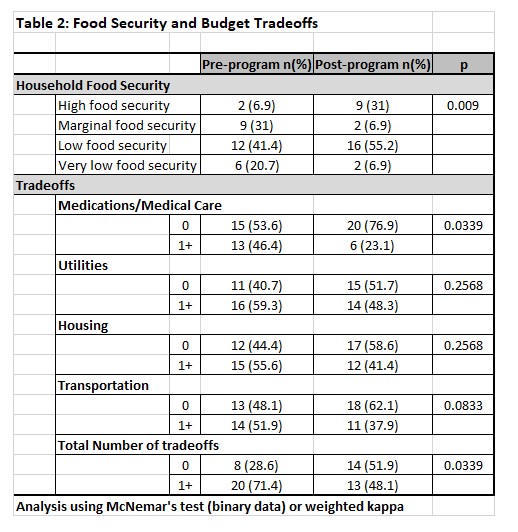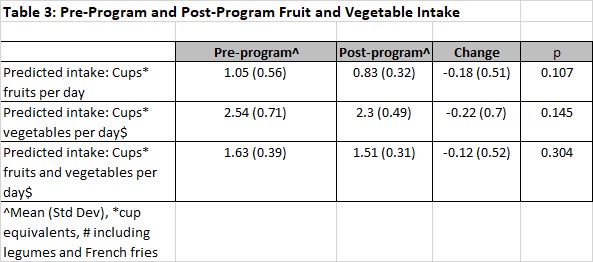Health Equity/Social Determinants of Health
Health Equity/Social Determinants of Health 10
604 - Evaluation of the Impact of Home Delivered Produce on Food Insecurity, Fruit and Vegetable Intake, and Budget Tradeoffs
Monday, May 1, 2023
9:30 AM - 11:30 AM ET
Poster Number: 604
Publication Number: 604.411
Publication Number: 604.411
Laura M. Plencner, Children's Mercy Hospitals and Clinics, Prairie Village, KS, United States; Jean Raphael, Baylor College of Medicine, Houston, TX, United States; Matt Hall, Children's Hospital Association, Lenexa, KS, United States; Jeffrey D. Colvin, Children's Mercy Hospitals and Clinics, Kansas City, MO, United States
- LP
Laura M. Plencner, MD
Associate Professor of Pediatrics
Children's Mercy Hospitals and Clinics
Prairie Village, Kansas, United States
Presenting Author(s)
Background: Over 1 in 6 children live in food insecure households. Food insecurity is associated with lower consumption of fruits and vegetables (“produce”) and increased tradeoffs between purchasing food and other necessities (e.g., medication, housing). Home delivery of produce through child home visiting programs may be an effective intervention to reduce food insecurity, increase produce consumption, and decrease budget tradeoffs.
Objective: To test the feasibility of implementing and evaluating an 8-week pilot trial of produce delivery through home vising programs on food insecurity, produce consumption, and budget tradeoffs.
Design/Methods: In this prospective pre/post pilot study, 51 low-income families participating in an infant home visiting program were enrolled. Produce was sourced from the hospital’s community garden and a community organization and was delivered weekly to participating households. Participants completed pre-program and post-program surveys on food insecurity (USDA’s 18-item Food Security Scale), fruit and vegetable consumption (10-item Dietary Screener Questionnaire), and budget tradeoffs (adapted from Hunger in America National Survey.) Total budget tradeoffs were calculated as well as by the categories of medication/medical care, utilities, housing, and transportation. Pre- and post-surveys were compared using McNemar’s test and weighted kappas. We included only those households who completed both pre- and post-program surveys.
Results: Twenty-nine (56.9%) participants completed both pre- and post-program surveys and were included in the analyses. A majority of participants were female (96.3%) and Hispanic (79.3%) (Table 1). Food security improved in the post-period, with more participants reporting high food security (pre: 6.9%, post: 31.0%) and fewer participants reporting very low food security (pre: 20.7%, post: 6.9%, p< 0.01) (Table 2). Fewer participants also made ≥1 tradeoffs in the post-program period overall (pre: 71.4%, post: 48.1%, p=0.03) and specifically for medications/medical care (pre: 46.4%, post: 23.1%, p=0.03) (Table 3). Produce consumption did not different between the pre- and post-program periods (Table 3).
Conclusion(s): This pilot study demonstrated feasibility in delivering produce through home visiting programs and evaluating the effectiveness of the intervention. It demonstrated proof of concept that the intervention can reduce food insecurity and budget tradeoffs for medications/medical care. Future directions include increasing the scope and a comparative study to further evaluate the impact of the intervention.


PAS FVC Table 1.jpeg
